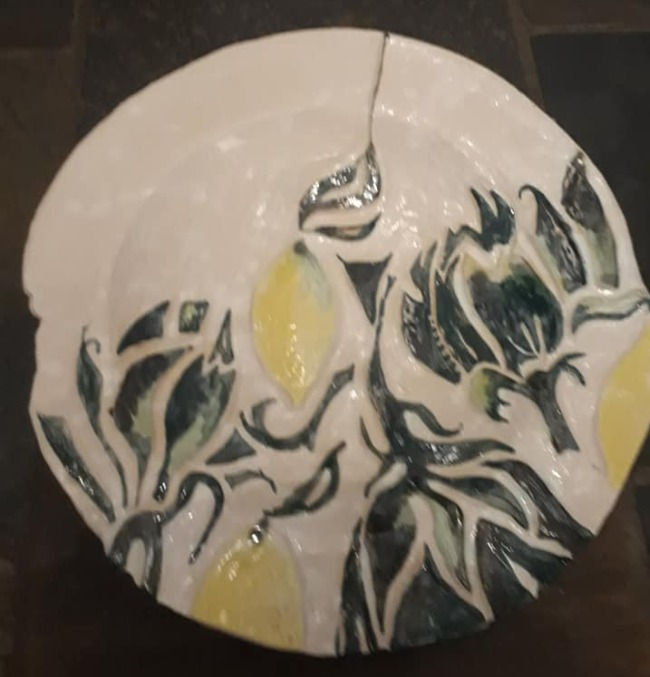Carving Platters 2
- tankralc
- Jan 2, 2021
- 2 min read
Warping after the bisque fire.
This platter warped a little after the first bisque fire and then majorly after the glaze fire: you can really see the twist in the clay.

As mentioned in my previous blog post, the clay memory played a big part in this, taking the clay off of the mould before it was leather hard and warping the shape, (even if you repair / reshape) but there were other factors. Let's explore them.
Carving - The technique and direction that you carve in really matters. As you remove material you need to take your time, keep all marks going in the same direction and apply even pressure. I didn't do this across the platter in a uniform manner. Again, I was too impatient. You can see my marks going in all different directions at different depths. His left some areas much thinner than others and as the clay dried and then contracted the shrinkage pulled the thinner areas more in the heat of the kiln.
I do like the directional marks though but these can be accentuated after a uniform carving technique.

Coloured Slips - I used several coloured slips onto the leather hard green ware (before bisque fire). I did this as I wanted a depth of colour and tone to my raised design but the slips add moisture to the raised pattern and not the surrounding areas. Again, drying then happens at a different pace across the platter adding to the potential to warp.
Glazing - I used several glossy, food safe glazes over the bisque fired clay. The coloured slips had fired and provided a flat colour to some areas. The addition of glaze adds moisture to the still porous surface. Allowing time to dry between each application and an even thickness of glaze is especially important.
Glaze Fire - Now we are in the hands of the kiln gods. A small warp from the bisque fire can suddenly become a major one. Firing is different each time depending on where you place the item in the kiln, what it is next to, how full the kiln is. So many variables.
So I have learnt to be patient when the clay is on the mould.
Keep an even thickness when carving.
Keep carving motions as best as you can in the same direction.
Keep moisture applications even.
Practice and make many but expect few to go as planned.
And all importantly, pray to the kiln gods :)





Comments